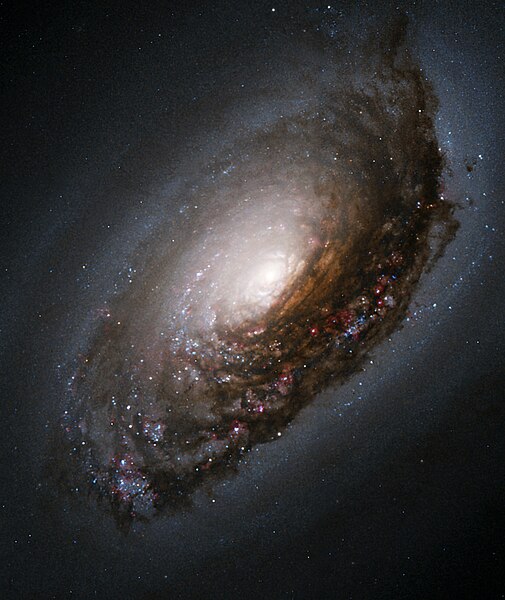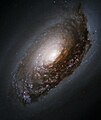Berkas:Blackeyegalaxy.jpg

Ukuran pratayang ini: 505 × 600 piksel. Resolusi lainnya: 202 × 240 piksel | 404 × 480 piksel | 897 × 1.065 piksel.
Ukuran asli (897 × 1.065 piksel, ukuran berkas: 774 KB, tipe MIME: image/jpeg)
Riwayat berkas
Klik pada tanggal/waktu untuk melihat berkas ini pada saat tersebut.
| Tanggal/Waktu | Miniatur | Dimensi | Pengguna | Komentar | |
|---|---|---|---|---|---|
| terkini | 2 Juni 2005 09.46 |  | 897 × 1.065 (774 KB) | CWitte | This image of M64 was taken with Hubble's Wide Field Planetary Camera 2 (WFPC2). The color image is a composite prepared by the Hubble Heritage Team from pictures taken through four different color filters. These filters isolate blue and near-infrared lig |
Penggunaan berkas
5 halaman berikut menggunakan berkas ini:
Penggunaan berkas global
Wiki lain berikut menggunakan berkas ini:
- Penggunaan pada af.wikipedia.org
- Penggunaan pada ar.wikipedia.org
- Penggunaan pada ast.wikipedia.org
- Penggunaan pada az.wikipedia.org
- Penggunaan pada be.wikipedia.org
- Penggunaan pada bg.wikipedia.org
- Penggunaan pada bn.wikipedia.org
- Penggunaan pada br.wikipedia.org
- Penggunaan pada bs.wikipedia.org
- Penggunaan pada ca.wikipedia.org
- Penggunaan pada ce.wikipedia.org
- Penggunaan pada ckb.wikipedia.org
- Penggunaan pada co.wikipedia.org
- Penggunaan pada cs.wikipedia.org
- Penggunaan pada cy.wikipedia.org
- Penggunaan pada de.wikipedia.org
- Penggunaan pada diq.wikipedia.org
- Penggunaan pada el.wikipedia.org
- Penggunaan pada en.wikipedia.org
- Messier object
- Coma Berenices
- List of galaxies
- Portal:Astronomy/Picture/May 2005
- Portal:Astronomy/Picture/12 May 2005
- Portal:Astronomy/Picture/Week 48 2005
- User:ComaDivine
- User:Superfo
- User:Gilgamesh~enwiki/Favorite images
- List of spiral galaxies
- Portal:Solar System
- Portal:Solar System/WikiProjects
- User:Passargea/Favourite pictures/Space
- User:Logos/Hall of Galaxies
- User talk:Example/Archives/2008/April
- User:Mike YuHong Chen
- User:Stefania.deluca/sandbox
Lihat lebih banyak penggunaan global dari berkas ini.

